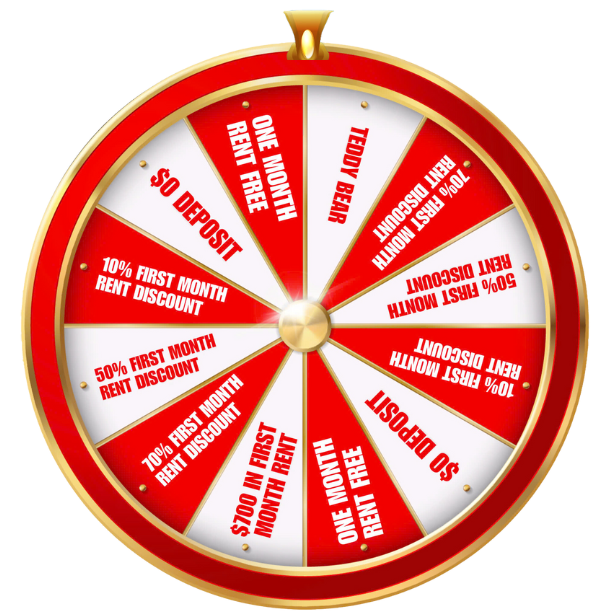For many, homeowners insurance is a safety net against property mishaps. But what if you’re a landlord renting out your place? Relying solely on homeowners insurance might not cut it. That’s where landlord insurance comes in. It’s like homeowners insurance for landlords, with a few tweaks.
Landlord insurance covers the building, and outbuildings, and can help with lost rent if your place becomes unlivable. It’s a lifeline for landlords if tenants get hurt on the property, too. So, if you’re thinking, “Do I need landlord insurance?” Chances are, yes.
But here’s the thing – it won’t guard your stuff inside. For that, you need to know which insurance suits your gig and define the difference between landlord and homeowners insurance. This guide breaks down the basics, making sure your rental investment stays secure and stress-free.
What is Landlord and Homeowners Insurance?
Landlord Insurance
Landlord insurance is a type of insurance coverage designed specifically for individuals who own properties that they lease or rent to tenants. This insurance protects the landlord’s interests, covering the structure of the rental property, associated outbuildings, and, in some cases, personal property owned by the landlord within the rental unit.
Key features of landlord insurance include:
- Property Coverage: Protects the physical structure of the rental property, including walls, roof, and floors.
- Loss of Rent Coverage: Helps compensate landlords for lost rental income if the property becomes uninhabitable due to a covered peril, such as fire or severe damage.
- Liability Coverage: Protects if a tenant or visitor is injured on the rental property and the landlord is found liable.
- Personal Property Coverage (Optional): Covers the landlord’s personal belongings within the rental unit, such as appliances or furnishings (optional and may vary).
Homeowners Insurance

Homeowners insurance is a broader form of insurance designed for individuals who own and reside in their homes. It provides coverage for the dwelling itself, personal property, liability protection, and additional living expenses if the home becomes temporarily uninhabitable due to a covered peril.
Key features of homeowners insurance include:
- Dwelling Coverage: Protects the structure of the home, including walls, roof, and attached structures like a garage.
- Personal Property Coverage: Covers personal belongings, such as furniture, clothing, and appliances, both inside and outside the home.
- Liability Coverage: Offers protection if someone is injured on the property, and the homeowner is found liable.
- Additional Living Expenses (Loss of Use): Covers living expenses if the home becomes temporarily uninhabitable, leading the homeowner to seek alternative accommodations.
What is the difference between Landlord and Homeowner insurance?
1. Target Audience
Landlord Insurance:
- Landlord insurance is meticulously designed to cater specifically to individuals who own properties with the intent to lease or rent them to tenants.
- This insurance product understands the unique challenges and risks associated with managing rental properties, making it a crucial choice for those actively involved in the dynamic landscape of real estate leasing.
- The target audience for landlord insurance comprises property owners who view their real estate assets not only as investments but as active sources of rental income.
Homeowners Insurance:
- Geared towards a broader audience, homeowners insurance is crafted for individuals who not only own but also reside in the homes they seek to insure.
- The target audience here includes homeowners who consider their property a primary residence—a place where they live, build their lives, and create personal sanctuaries.
- Homeowners insurance is tailored to the specific needs of those who value their homes beyond their financial worth, offering comprehensive coverage for the dwelling, personal belongings, and additional living expenses.
2. Property Use

Landlord Insurance:
- Focusing on the unique risks associated with rental properties, landlord insurance directs its coverage toward properties that are leased or rented to tenants.
- This includes a range of real estate types, such as residential homes, commercial spaces, apartments, and more. The emphasis here is on addressing the challenges and responsibilities that arise from managing properties with tenants.
Homeowners Insurance:
- Tailored for owner-occupied residences, homeowners insurance directs its coverage toward properties where the owner resides.
- This includes a diverse range of dwelling types, from single-family homes to condominiums. The primary focus is on providing comprehensive coverage for the homeowner’s primary dwelling, acknowledging the specific needs and risks associated with owner-occupied residences.
3. Coverage for Rental Income
Landlord Insurance:
- A distinctive feature of landlord insurance is its coverage for loss of rental income. This becomes crucial if the property becomes uninhabitable due to covered perils, enabling landlords to recoup lost rent during such scenarios.
- This coverage acknowledges the financial impact of unforeseen events on a landlord’s rental income stream.
Homeowners Insurance:
- In contrast, homeowners insurance generally does not include coverage for loss of rental income.
- The coverage scope of homeowners insurance is not designed to address the specific risks tied to rental-related scenarios. As such, homeowners may find themselves without financial protection for the potential loss of income from a rented property.
4. Personal Property Coverage
Landlord Insurance: Landlord insurance primarily focuses on the structure of the rental property and associated outbuildings. While coverage for personal property may be optional, the emphasis is on safeguarding the physical elements of the property rather than the landlord’s personal belongings within the rental unit.
Homeowners Insurance: Extensive personal property coverage is a hallmark of homeowners insurance. It covers personal belongings both inside and outside the home, providing comprehensive protection for items such as furniture, clothing, appliances, and other possessions owned by the homeowner.
5. Liability Coverage
Landlord Insurance: Liability coverage in landlord insurance comes into play if a tenant or visitor is injured on the rental property, and the landlord is found liable. This acknowledges the increased responsibility and potential legal implications associated with managing properties with tenants.
Homeowners Insurance:
- Offering liability protection for incidents that occur on the homeowner’s property, regardless of whether it is rented out, homeowners insurance addresses a broader scope of liability concerns.
- This includes scenarios involving visitors, neighbors, or anyone who might sustain injuries on the homeowner’s premises.
6. Additional Living Expenses (Loss of Use)

Landlord Insurance:
- Landlord insurance may include coverage for the landlord’s additional living expenses if they require alternative accommodations due to covered perils.
- This acknowledges the potential displacement and additional costs that a landlord may incur during scenarios where the rental property becomes temporarily uninhabitable.
Homeowners Insurance:
- Providing coverage for additional living expenses if the homeowner’s primary residence becomes temporarily uninhabitable, homeowners insurance ensures financial support for alternative accommodations.
- This coverage becomes essential during situations where the homeowner needs to seek temporary housing due to covered perils affecting their primary dwelling.
Is Landlord Insurance More Expensive Than Homeowners Insurance?
According to the Insurance Information Institute, getting landlord insurance could cost you about 25% more than what you’d pay for homeowners insurance with similar coverage. But remember, there’s no fixed cost for landlord insurance.
The difference cost between landlord and homeowner insurance, on average, homeowners insurance for $300,000 worth of coverage might be around $1,854 per year, while landlord insurance for a similar level of protection could run you approximately $2,317 per year.
These are just rough estimates because insurance costs change based on various things. Where your rental property is—state, city, county, and neighborhood—all affect the price. Also, the kind of rental property you own, like a condo or a multi-family building, along with its size, age, and how it’s built, can impact what you pay for insurance.
So, how can you figure out exactly what you’ll pay for landlord insurance? The best way is to chat with an independent insurance agent. They can help you understand your coverage options and find a policy that fits your needs and budget.
Let’s dive into a practical case study to understand how the costs of landlord and home insurance might play out.

Imagine you own a rental property, and you’re weighing the expenses of landlord insurance against what you’d pay for homeowners insurance on your primary residence. You’re looking for coverage that not only protects your property but also fits into your budget.
Scenario:
- Rental Property: You have a rental property with an estimated value of $400,000.
- Homeowners Insurance: On your primary residence valued at $350,000.
Cost Estimates:
- Landlord Insurance: Typically, landlord insurance costs about 25% more than homeowners insurance. So, if homeowners insurance for your primary residence is around $1,500 per year, you might expect landlord insurance for the rental property to be approximately $1,875 per year.
- Homeowners Insurance: For the primary residence valued at $350,000, homeowners insurance might average around $1,500 per year.
Considerations:
- Variables: Remember, these are rough estimates, and actual costs vary based on factors like location, property type, and coverage specifics.
- Coverage Needs: Your insurance needs for a rental property might include protection for rental income loss, while homeowners insurance focuses more on personal property and additional living expenses.
Decision-Making:
To get a precise estimate and make informed decisions, engaging with an independent insurance agent is key. They can help you navigate the specific details of coverage, understand your unique needs, and find policies that align with both your property and financial considerations.
In this case study, the costs are illustrative, and consulting with an independent insurance agent ensures you receive personalized insights based on your specific situation.
How to Change Your Homeowners Insurance to Landlord Insurance?
Transitioning from homeowners insurance to landlord insurance is a thoughtful process that involves several key steps.
Firstly, it’s crucial to understand the shift in property use from personal residence to a rental space. To initiate the change, thoroughly review your current homeowner’s insurance policy, identifying elements that may need adjustment or no longer apply.
Contact your insurance company and communicate the change in property use. Provide detailed information about the rental property, including its size, type, and any additional structures. Engage in a discussion with your insurance agent to tailor coverage specifically to the needs of a rental property, considering aspects like liability coverage, loss of rental income, and other essential features.
Once you’ve secured suitable landlord insurance, notify your homeowner’s insurance provider to cancel the existing policy. Don’t forget to inform your mortgage company about the change in insurance coverage. Keep detailed records of all communications and regularly reassess your landlord insurance coverage to ensure ongoing protection for your rental property.

In conclusion, understanding the difference between landlord and homeowners insurance is essential in the intricate realm of property protection. Our exploration has clarified the distinct roles and audiences of these insurances.
Landlord insurance is custom-designed for those involved in property leasing, offering robust coverage for rental challenges—from safeguarding structures to addressing income loss and liability. It caters specifically to the dynamic needs of landlords in the rental market.
Conversely, homeowners insurance acts as a comprehensive shield for individuals deeply connected to their primary residences. Covering dwellings, personal belongings, liability, and living expenses, it addresses broader homeowner needs.
The distinctions extend to target audiences, property use, and financial considerations. Our case study has highlighted potential cost variations, underscoring the importance of personalized consultations with independent agents for well-informed decisions.
In the ever-evolving landscape of real estate, choosing the right insurance is crucial. Armed with a clear understanding, property owners can confidently navigate, ensuring their investments and homes are fortified against uncertainties.











